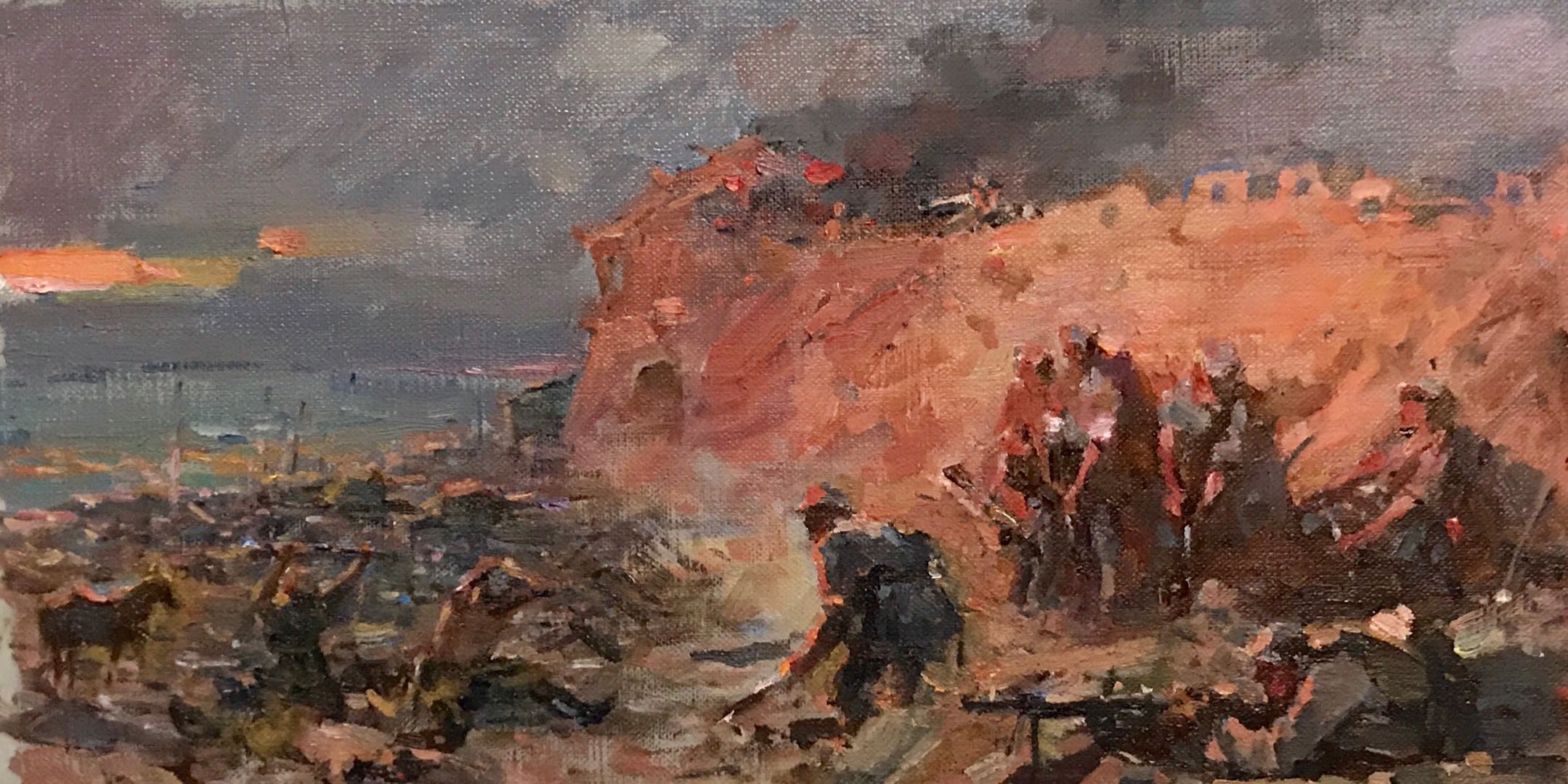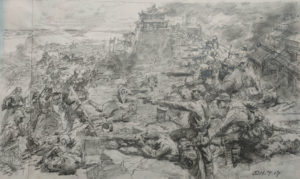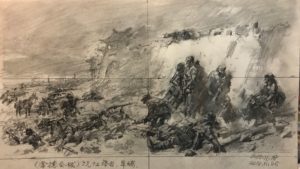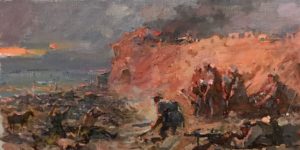Inspiration of subject matter depends on one’s cultural background, education and life experience.
It could be a book you read, a folk story in your culture, or something you observed in life. But there is a lot more to think about after selecting a subject. For example, who is in the painting? What are they doing? When and where is this taking place? Why are the people doing what they are doing? What is the relationship between these people? I think of the artist as the screen writer, director, stage designer, costume designer and make-up artist all in one and that he has to select a scene from the movie or the play to put on the canvas. And selecting that scene is a journey in itself.
A painting I’m currently working on is Battle of Changde. The source of inspiration is from childhood experience. I grew up next to the Battle of Changde Memorial in the city of Changde, Hunan province in Central China. The memorial was built to commemorate the Chinese soldiers who participated in the Battle of Changde in 1943, one of the major campaigns in the Second Sino-Japanese War during the Second World War. According to Bai Congxi‘s memoirs, a total of 160,000 Japanese troops and 210,000 Chinese troops participated in the battle. The battle saw heavy casualties on both sides. The Japanese began their offensive on November 2, 1943. Changde was guarded by the Chinese 57th Division from the 74th Corps. The division’s 8,000 troops, in spite of being overwhelmingly outnumbered by the Japanese invading troops, stubbornly held on to the city for eleven days and nights. When the Chinese reinforcement finally arrived, there were 100 survivors in the 57th division and all were wounded. The city of Changde fell to the Japanese control on December 6 and was retaken by the Chinese on December 13 after intense house-to-house fighting.
Growing up right next to the Battle of Changde Memorial, I have always wanted to do a painting about the Battle of Changde and the people who sacrificed their lives defending the country. However, figuring exactly how took a number of years and a few iterations.
In the early pencil studies, I depicted a battle field with heavy fighting. Then I thought it was a bit boring and didn’t tell the story I wanted to tell fully. True, there was heavy fighting and lots of casualties. The same goes for any battle in a major war. How is this one different from other battles? So in the latest composition, I focus on the battle drawing to an end. The few remaining Chinese soldiers are still fighting in the defense of Changde. They are wounded and exhausted. There are dead bodies everywhere on the battle field. There are Japanese troops making a charge in the distance. It’s evening and the sun coming out from the clouds, shining on the city wall, bathing everything in red. And I leave you to interpret what the sunshine means. Here is a video on the inspiration for the sunset.
I’m currently working on the color study of the painting before working on the full size canvas. I will share the final painting once I finish it. It’s going to take a while. To be continued…








Thanks for sharing, truly inspirational
Thank you C J! We’re glad you liked the post!